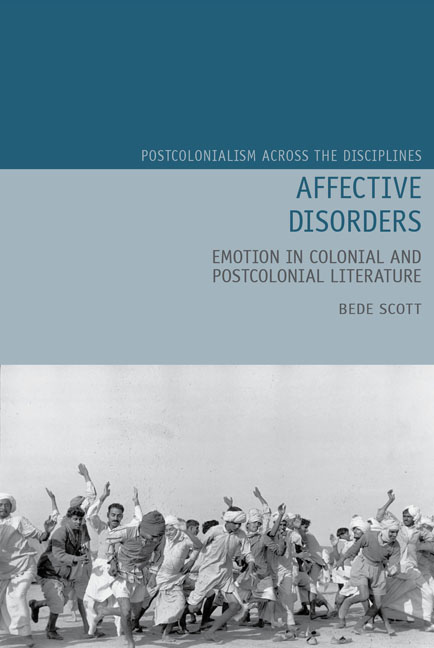Book contents
- Frontmatter
- Dedication
- Contents
- Acknowledgements
- Introduction
- 1 Anger: Naguib Mahfouz's Midaq Alley
- 2 Reticence: Vikram Seth's A Suitable Boy
- 3 Jealousy: Joaquim Maria Machado de Assis’ Dom Casmurro
- 4 Boredom: Upamanyu Chatterjee's English, August: An Indian Story
- 5 Fear: Michael Ondaatje's Anil's Ghost
- 6 Stuplimity: Vikram Chandra's Sacred Games
- Works Cited
- Index
5 - Fear: Michael Ondaatje's Anil's Ghost
- Frontmatter
- Dedication
- Contents
- Acknowledgements
- Introduction
- 1 Anger: Naguib Mahfouz's Midaq Alley
- 2 Reticence: Vikram Seth's A Suitable Boy
- 3 Jealousy: Joaquim Maria Machado de Assis’ Dom Casmurro
- 4 Boredom: Upamanyu Chatterjee's English, August: An Indian Story
- 5 Fear: Michael Ondaatje's Anil's Ghost
- 6 Stuplimity: Vikram Chandra's Sacred Games
- Works Cited
- Index
Summary
I comprehend in this word fear, a certain foresight of future evil.
Thomas Hobbes, Philosophical Rudiments Concerning Government and Society, 1651The tradition of the oppressed teaches us that the ‘state of
emergency’ in which we live is not the exception but the rule.
Walter Benjamin, ‘On the Concept of History,’ 1940During the Sri Lankan Civil War, which lasted from 1983 until 2009, an estimated 60,000 to 100,000 people disappeared (Amnesty, Only 7). Of course, they did not simply ‘disappear’; they were arrested or abducted, often tortured and mutilated, and then almost certainly killed. According to an Amnesty International report published in 1990, none of the parties responsible for such atrocities made any effort to conceal what they had done:
Piles of bodies were dumped openly by roadsides, in fields and in cemeteries; others were thrown into rivers … Many bodies dumped in Sri Lanka were mutilated or burned beyond recognition, often on pyres of rubber tyres. In November and December [1989], the mutilated bodies of [Janatha Vimukthi Peramuna] suspects, many of them apparently captives at the time of their killing, were reported to have been left hanging at central points in Kandy … while in surrounding villages severed limbs were hung from trees as part of a macabre and terrifying warning to communities considered sympathetic to the JVP. (Sri Lanka 13)
In this case, the perpetrators were the Sri Lankan government forces, although the other two sides in what was essentially a three-way conflict – the Liberation Tigers of Tamil Eelam (LTTE), who were fighting for an independent Tamil homeland in the north of the island, and the aforementioned JVP, a revolutionary left-wing party, which was mainly composed of young Sinhalese – were responsible for similar atrocities.1 Altogether, by the time a ceasefire was finally declared in 2009, at least 100,000 people had been killed (Kingsbury 142). One of the primary objectives of this violence was to terrorize the civilian population, to create a climate of fear that would reinforce the political and military dominance of the party in question – whether it be the Sri Lankan government, the LTTE, the JVP, or even the Indian peacekeeping force that was deployed in the country from 1987 to 1990.
- Type
- Chapter
- Information
- Affective DisordersEmotion in Colonial and Postcolonial Literature, pp. 127 - 146Publisher: Liverpool University PressPrint publication year: 2019



